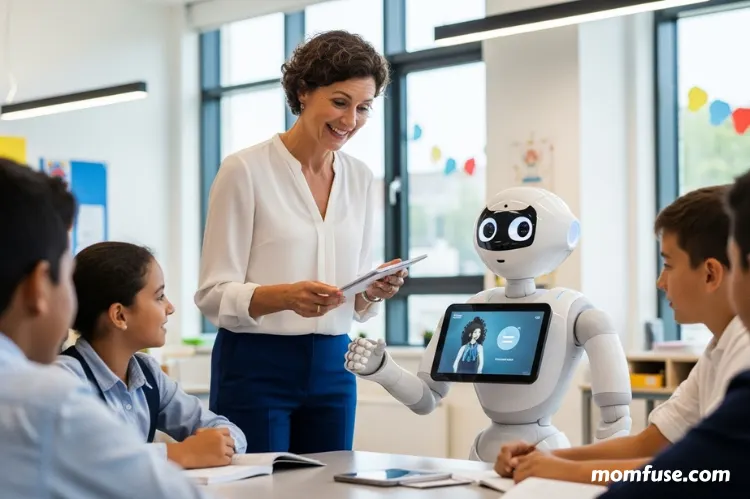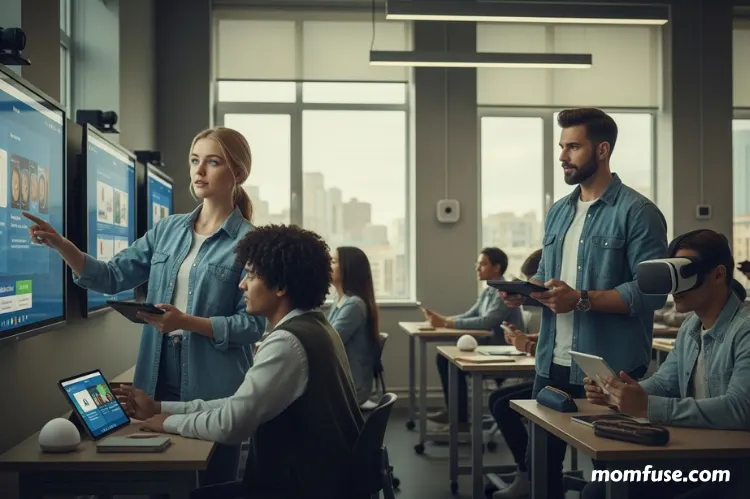Artificial Intelligence (AI) is at the center of transformative changes in education, touching the lives of students and educators alike. This technology reshapes the learning experience, making it more personalized, accessible, and efficient.
As educators adapt to these changes, understanding AI’s implications for both teaching and learning is essential. Many argue that AI will offer innovative tools that could redefine educational practices and outcomes, unleashing unprecedented potential for learners.
The Role of AI in Online High Schools

Online high schools are increasingly integrating AI technologies to enhance student experiences and learning outcomes. With AI-powered platforms, students can benefit from tailored content that aligns with their learning styles.
Personalized learning systems create unique pathways for each learner, making it easier to grasp complex concepts and progress at their own pace. The team behind https://svhs.co/ says that AI can facilitate dynamic interactions between educators and students that foster a supportive and engaging learning environment. These innovative technologies can address various challenges in online education, such as student engagement and retention.
Online platforms are able to evaluate student data and adjust class plans by using sophisticated algorithms. If a student falls behind, AI tools can provide additional resources, like quizzes and interactive modules, that help them catch up. This proactive approach reduces frustration and increases overall satisfaction among students.
Another critical aspect is the availability of timely feedback. Traditionally, students might wait days for feedback on assignments, but AI tools can provide immediate responses. Rapid feedback loops help students understand their mistakes and learn from them swiftly, contributing to enhanced learning traits.
AI’s Potential to Support Teachers

The integration of AI in education not only benefits students; it supports teachers in countless ways. AI can lighten the administrative load, enabling teachers to devote more time to instruction. Grading assignments can be a labor-intensive process, especially with large classes.
AI grading tools can assist teachers by automating the assessment of multiple-choice and fill-in-the-blank questions, saving significant time. As a result, educators can focus more on fostering critical thinking and problem-solving skills among their students.
AI-driven analytics provide teachers with insights into student performance. By tracking progress systematically, educators can identify which students need additional support and customize their teaching strategies. This data-driven approach cultivates a more tailored educational experience, fostering engagement and comprehension.
Teachers can leverage AI to collaborate on lesson plans and share resources with colleagues. Intelligent platforms can suggest engaging materials and activities based on specific subject areas, enhancing collaboration among peers while diminishing the time spent searching for high-quality resources. This sharing of knowledge creates a community of practice among educators.
Challenges of Implementing AI in Education

Despite the many advantages, the journey toward AI integration in education comes with challenges. One significant concern is data privacy and security. With the rise of AI usage, educational institutions must handle sensitive student information responsibly. This includes protecting personal data from cyber threats and ensuring compliance with regulations like GDPR.
The implementation of AI resources often requires considerable investment in infrastructure and training. Schools need to equip teachers with the necessary skills and tools, as not all educators are familiar with these technologies. Professional development programs aimed at integrating AI into curricula should prioritize teacher training, ensuring they feel comfortable employing these tools effectively. Another barrier is the digital divide.
Not every student has access to the technology required for online learning or AI tools. Schools must find solutions to bridge this gap and ensure equitable learning opportunities for all students. Funding and support from local communities can play crucial roles in overcoming these obstacles.
The Future of AI in the Classroom

Looking ahead, the future of AI in education seems promising, with ongoing advancements signaling even more innovative approaches to learning. Emerging AI technologies, like virtual and augmented reality, are paving the way for immersive educational experiences that foster engagement and skill mastery. Interactive simulations can allow students to experiment with concepts in real-time, making learning more tangible and applicable to real-world scenarios.
AI has the potential to transform career readiness initiatives. As AI captures more information about student performance, it can help educators identify gaps in knowledge while suggesting tailor-made skill development programs.
Students may receive guidance on vocational opportunities and academic pathways that best suit their talents and interests, creating a clearer direction for their future. This synergy between AI and education not only enhances academic learning but can positively shape students’ emotional and social development. Educational institutions that embrace AI will likely prioritize the holistic development of students, cultivating resilience, adaptability, and creativity alongside traditional academic skills.
With AI’s influence expected to grow, ongoing research and thoughtful integration strategies will be necessary. Collaborative efforts among educators, institutions, and AI developers can help create a beneficial framework that harnesses the power of AI while offering meaningful solutions to challenges faced in today’s educational landscape.
Read Next: Modern Learning Paths: Rethinking Education for Every Child

